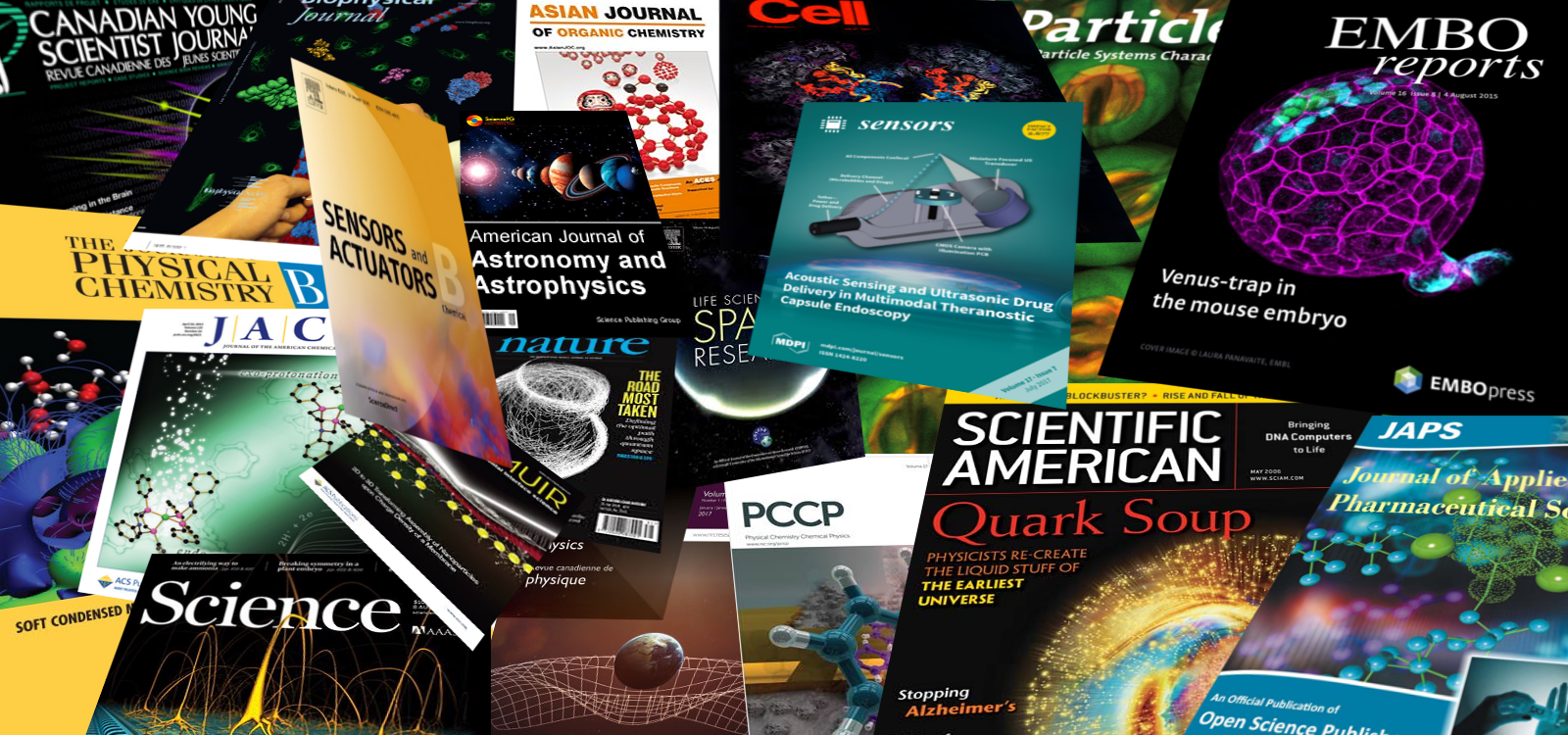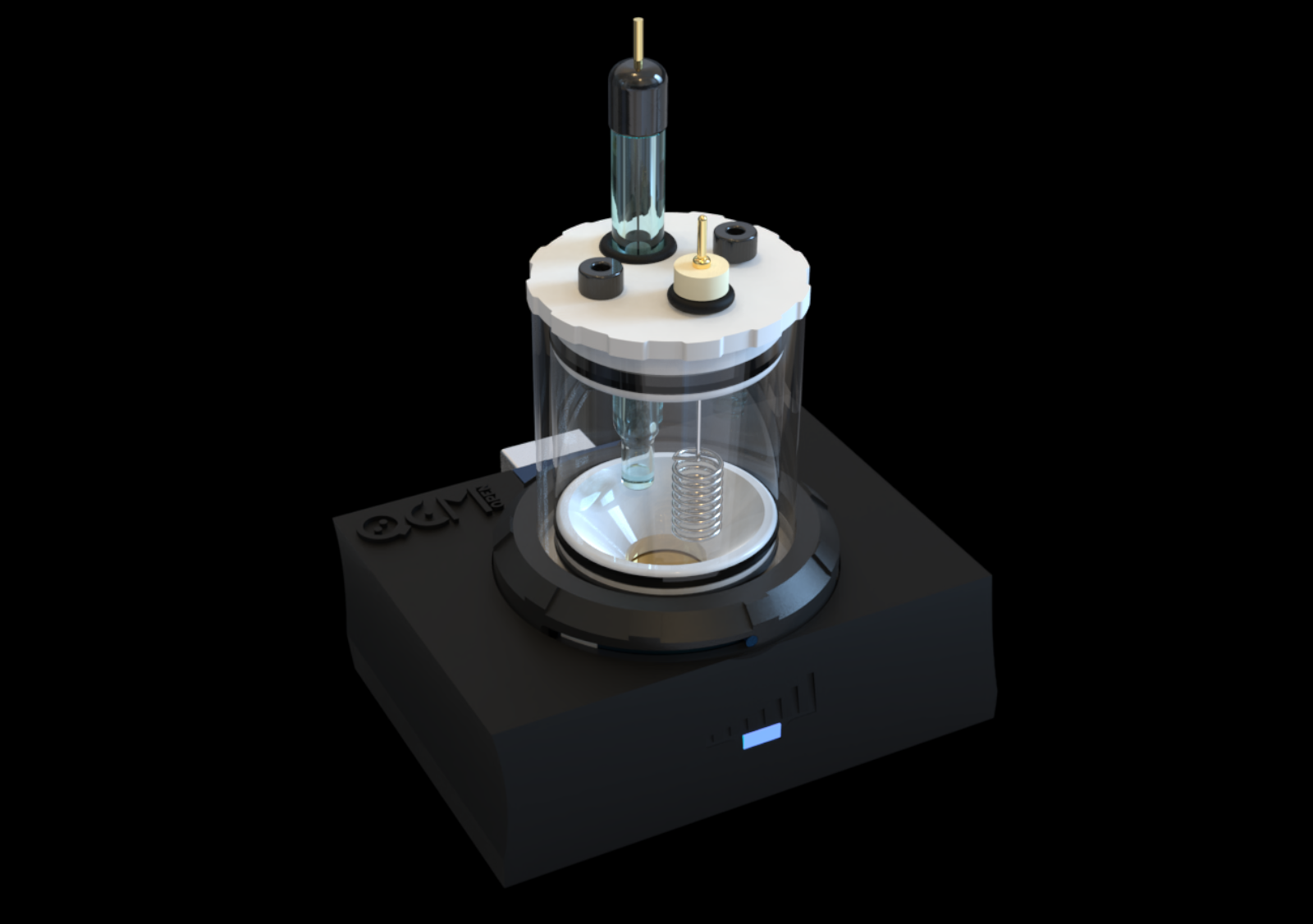openQCM – Powered by Novaetech S.r.l

Scientific Papers
Publications citing the applications of openQCM (by Novaetech S.r.l.) instruments and accessories in scientific research.
The list of scientific papers published on the most important journals showing the usage of openQCM in several scientific fields, such as thin film deposition, chemical sensors, biological research and biosensors.
Because of the large number of publications, we are reorganizing everything by subject areas. This will take some time. Thank you for your patience
2025
Samiei, Sepehr; Kalantarian, Asadollah; zad, Azam Iraji; Darmiani, Narges
Room-temperature ethylene glycol sensor based on cuprous oxide/MXene films Journal Article
In: Nature: Scientific Reports, vol. 15, no. 1, pp. 28639, 2025, ISSN: 2045-2322.
Abstract | Links | BibTeX | Tags: Cu2O/MXene bilayer, Ethylene glycol (EG), Gas sensors, MXene, openQCM sensors, Quartz Crystal Microbalance (QCM)
@article{Samiei2025,
title = {Room-temperature ethylene glycol sensor based on cuprous oxide/MXene films},
author = {Sepehr Samiei and Asadollah Kalantarian and Azam Iraji zad and Narges Darmiani},
url = {https://doi.org/10.1038/s41598-025-12019-1},
doi = {10.1038/s41598-025-12019-1},
issn = {2045-2322},
year = {2025},
date = {2025-08-05},
urldate = {2025-08-05},
journal = {Nature: Scientific Reports},
volume = {15},
number = {1},
pages = {28639},
abstract = {This study demonstrates a high-performance room-temperature ethylene glycol (EG) gas sensor using Cu2O/MXene bilayer films on quartz crystal microbalance (QCM) substrates, addressing critical needs for industrial safety and environmental monitoring. The fabricated sensors were systematically characterized by XRD, FTIR, and FESEM, revealing that the Cu2O/MXene bilayer configuration achieved exceptional performance with an ultra-low detection limit of 381 ppb, high sensitivity of 22.8 Hz/ppm, and excellent selectivity compared to individual Cu2O, MXene, or their mixture films. The enhanced sensing capability originates from synergistic effects between p-type Cu2O and conductive MXene, forming a Schottky junction that facilitates charge transfer and promotes EG adsorption through combined physisorption mechanisms involving hydrogen bonding with MXene's functional groups (OH, O, F) and interactions with oxygen species on Cu2O nanoparticles. At 72 ppm EG concentration, the bilayer sensor exhibited 12.6-fold, 3.6-fold, and 2.34-fold higher response than pure Cu2O, MXene alone, and their mixture film, respectively. While humidity tests showed a moderateþinspacetextasciitildeþinspace15% response reduction at 60% RH, the Cu2O/MXene bilayer maintained robust performance, establishing it as a cost-effective and reliable room-temperature sensing platform suitable for next-generation gas detection applications in challenging environments.},
keywords = {Cu2O/MXene bilayer, Ethylene glycol (EG), Gas sensors, MXene, openQCM sensors, Quartz Crystal Microbalance (QCM)},
pubstate = {published},
tppubtype = {article}
}
This study demonstrates a high-performance room-temperature ethylene glycol (EG) gas sensor using Cu2O/MXene bilayer films on quartz crystal microbalance (QCM) substrates, addressing critical needs for industrial safety and environmental monitoring. The fabricated sensors were systematically characterized by XRD, FTIR, and FESEM, revealing that the Cu2O/MXene bilayer configuration achieved exceptional performance with an ultra-low detection limit of 381 ppb, high sensitivity of 22.8 Hz/ppm, and excellent selectivity compared to individual Cu2O, MXene, or their mixture films. The enhanced sensing capability originates from synergistic effects between p-type Cu2O and conductive MXene, forming a Schottky junction that facilitates charge transfer and promotes EG adsorption through combined physisorption mechanisms involving hydrogen bonding with MXene's functional groups (OH, O, F) and interactions with oxygen species on Cu2O nanoparticles. At 72 ppm EG concentration, the bilayer sensor exhibited 12.6-fold, 3.6-fold, and 2.34-fold higher response than pure Cu2O, MXene alone, and their mixture film, respectively. While humidity tests showed a moderateþinspacetextasciitildeþinspace15% response reduction at 60% RH, the Cu2O/MXene bilayer maintained robust performance, establishing it as a cost-effective and reliable room-temperature sensing platform suitable for next-generation gas detection applications in challenging environments.

